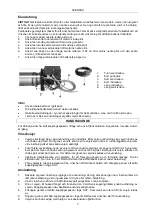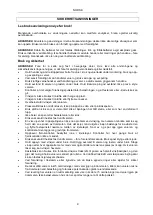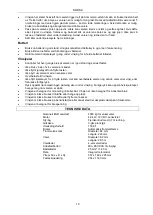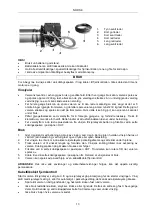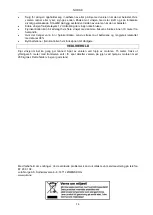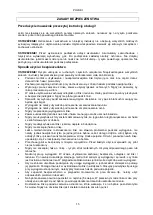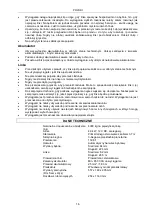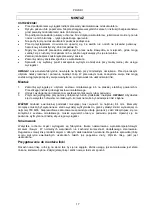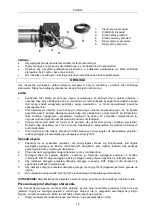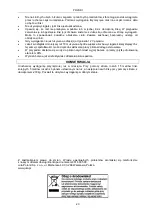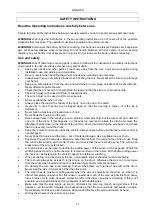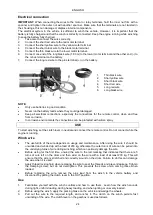
21
ENGLI SH
SAFETY INSTRUCTIONS
Read the Operating Instructions carefully before use.
Failure to follow all the instructions below can result in electric shock, fire and/or serious personal injury.
WARNING:
Warnings and instructions in these operating instructions do not cover all of the possible
situations that may arise. The operator must employ caution and common sense.
WARNING:
Disconnect the battery before connecting. Car batteries and leisure batteries emit explosive
gas. Wear safety glasses when connecting. Do not handle batteries with wet hands, or when wearing
jewellery on your hands - risk of severe burn injuries. Do not lean over the battery when connecting.
Use and safety
WARNING:
Risk of fastening in moving parts. Failure to follow all the instructions and safety instructions
could result in the risk of serious personal injury and/or death.
Keep your hands and other parts of your body away from the wire, hook and wire guide during
installation, use and winding and unwinding.
Be very careful when handling the wire and hook when winding and unwinding.
Always wear heavy-duty safety gloves when handling the wire. Never allow the wire to slip through
your hands.
Keep at a safe distance from the wire and load when in use. Keep onlookers at a safe distance.
Never attempt to guide the wire.
Check that the anchor point can withstand the load and that the strap or chain cannot slip.
The winch must not be used to lift up or suspend loads.
The winch must not be used to lift or move people.
Never overload the winch or wire.
Always place the load in the middle of the hook, not on the tip or the catch.
Never use a hook that has been stripped down so that the opening is larger, or if the tip is
deformed.
Never touch a tensioned or loaded wire or hook.
Never hook the hook round the wire.
Some unevenness in the winding is not a problem when winching, but the wire must not collect at
one end of the drum. If this happens, run the winch in reverse to relieve the strain and move the
attachment point closer to the middle of the vehicle. Unwind and wind up the wire again, and check
that it runs evenly round the drum.
Keep the remote control safe inside the vehicle. Always check before use that the remote control is
not damaged.
Never hook the hook round the wire
– risk of material damage. Use a suitable loop or chain.
Supervise the winch during use. Keep at a safe distance from the wire and load when in use. Stop
the winch after winding each metre of wire, and check that the wire winds evenly. The winch can
break down if the wire gets locked.
A snatch block can be used to double the pulling power of the winch, at the expense of half the
winching speed, and to enable the wire to remain centred on the rollers. With double pulling power
the hook can be fastened to the vehicle chassis for stationary winching.
When anchoring on a tree trunk or the like, use suitable rings or shackles for safe anchoring.
There should always be at least 5 turns of wire on the drum. Otherwise the wire can come loose
from the drum when loaded and result in personal injury and/or material damage.
On delivery the wire has a red marking to show when there are 5 turns of wire left on the drum.
Never load the wire if it unwinds further than this point.
The winch has its maximum pulling power when the wire lies directly on the drum, i.e. when it is
almost completely unwound. For this reason, unwind as much of the wire as possible for a heavy
load. 5 turns of wire must, however, always be left on the drum
– see the red marking. If this is not
possible, use a snatch block and an arrangement with double wires.
Make sure that the wire winds up evenly, otherwise the wire can clench and get stuck. If this
happens, run the winch forwards and backwards so that the wire unwinds and winds up again.
Never attempt to loosen a clenched wire when loaded. Relieve the wire and loosen by hand.
Wedge the wheels of the vehicle on a slope.
Summary of Contents for 604-098
Page 26: ......

